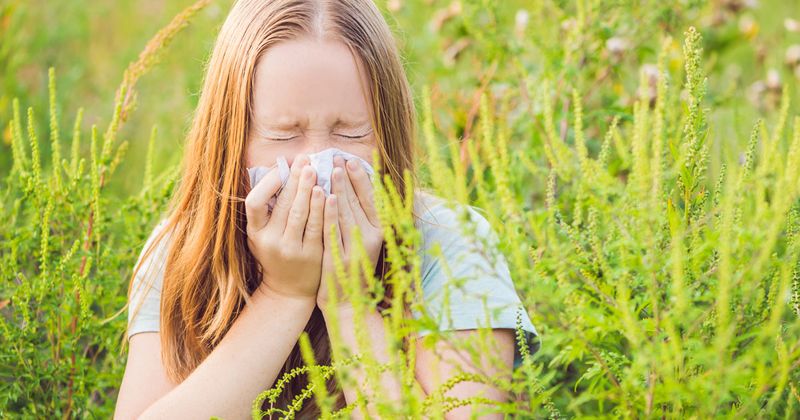Complex factors affecting pollen count make symptom thresholds difficult to determine
Key takeaways:
- Due to multiple meteorological factors, pollen counts vary by season and location.
- Current methods measure pollen counts, not allergen counts.
- New technologies may make more individualized treatment possible.
SAN ANTONIO — Multiple factors modulate the relationship between pollen counts and allergic disease, inhibiting preventive care, according to data presented at the American Academy of Allergy, Asthma & Immunology Annual Meeting.
“Unfortunately, we don’t have a ‘one size fits all’ to predict the effect of pollen levels on disease symptoms,” Reena Yaman, MD, second year internal medicine resident, Mayo Clinic, told Healio.

The scoping review comprised nine studies on airmass pollen travel, 26 studies on meteorological and environmental factors and 20 studies on pollen thresholds.

In these studies, pollen most often was quantified with the Burkhard volumetric trap. The Rotorod ampler also was used, although it was used less often. Also, the studies described 16 environmental and meteorological factors that impact environmental pollen counts.
“Wind speed, wind duration, turbulence, warmer temperatures, thunderstorms, circulating levels of gasses, but also particulate matter, tend to increase allergenicity in circulating pollen levels,” Yaman said.
Distance from pollen source and pollen size tend to decrease the effect on pollen count and allergen load. Wind direction, mountain ranges, urban geography, humidity and precipitation all have a mixed effect.
The study also sought to determine how pollen levels correlate with symptoms, ED visits and other outcomes of allergic disease.
“Unfortunately, there is no consensus on how to define a threshold to begin with,” Yaman said.
For example, some studies defined thresholds by assessing levels correlating with symptoms in all patients others examining the minimum percentages of participants who experienced symptoms.
Yet other studies investigated plateaued effects, correlations with symptom onset but not resolution and difficulties in threshold identification. Further, different studies used different clinical outcome measures.
Amounts of pollen that were required to elicit symptoms varied by pollen type, symptom and disease as well. Plus, qualitative variability in pollen, type of pollen, location and pollutants affected pollen allergenicity. In one study, individual pollen exposure did not correlate with measured pollen levels.
The researchers also noted that current pollen-counting methods do not identify sub-pollen particles that include highly active allergens, as pollen counts do not reflect allergen loads.
“Additionally, there’s a difference in defining what you’re looking at as a disease and measured outcome,” Yaman said.
“For grasses, reported thresholds vary from 2 to 52 grains per meter cubed per day, depending on where you’re doing the study, what you’re defining as an outcome measure, how you’re defining your threshold, what the direction of the threshold is, and where you draw that line,” she continued.
Similarly, studies reported a threshold for tree allergy of less than 5 grains/m3day for asthma visits and exacerbations in the United States, in addition to specific olive allergy thresholds of 162 grains/m3day for rhinoconjunctivitis and asthma symptoms and 368 to 415 grains/m3day for rhinitis symptoms, both in Spain.
Various thresholds related to weed, ash, birch and ragweed allergy symptoms in Europe and the United States were reported as well.
The researchers also examined controlled allergen challenge facilities, where participants are exposed to controlled types and quantities of allergen to investigate pathophysiology and therapies.
Yaman caution that the levels of pollen that these facilities use to trigger symptoms are much higher than levels that trigger symptoms naturally, so they are not used to determine pollen thresholds for symptoms.
The studies included facilities that used 3,500 ± 500 grains/m3 of ragweed, 10,000 ± 2,000 grains/m3 of Virginia live oak and 12,500 ± 2,500 grains/m3 of mountain cedar due to presumed underestimation of pollen counts at heights where spore traps are placed and based on peak levels averaged over 24 hours.
Climate change plays a role in these variations too, Yaman.
“Mostly, it prolongs pollen season and then also increases pollen potency,” she said. “And then of course it interacts with all of these different things increasing temperature, changing gasses, and then circulating particulate matter, all of that stuff which also each individually has its effect on pollen counts.”
In the future, personal counters, databases and other innovations may be able to track symptoms and provide additional data for investigation, the researchers said.
“There’s a big push toward figuring out how to translate the information we know now into determining clinical decisions,” Yaman said. “There’s a good amount of work left to be done.”
For now, the researchers concluded, pollen counts vary by year and location due to many meteorological factors. Also, the researchers noted that there is no established definition for pollen thresholds. Identification varies by multiple factors as well, with current methods measuring pollen instead of allergen counts.
As a result, the researchers said, there are no current established thresholds or algorithms available to guide clinical decisions even though allergic symptoms are expected to with increasing environmental pollen levels.
In the meanwhile, Yaman said, the differences between pollen levels and allergen levels mean that providers will have to base their care on what their patients tell them and when they tend to predict they will experience their symptoms.
“The hope is that in the future, there will be better tools available to help preemptively start people on therapies before their symptoms are problematic,” Yaman said.

